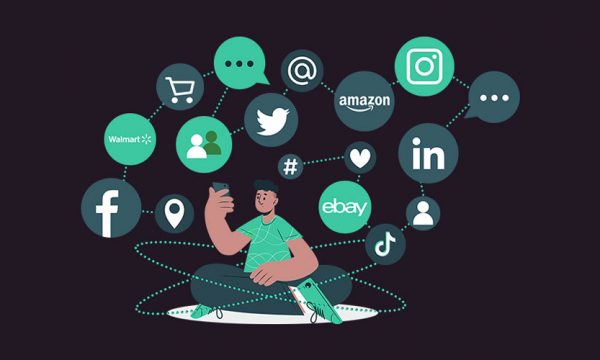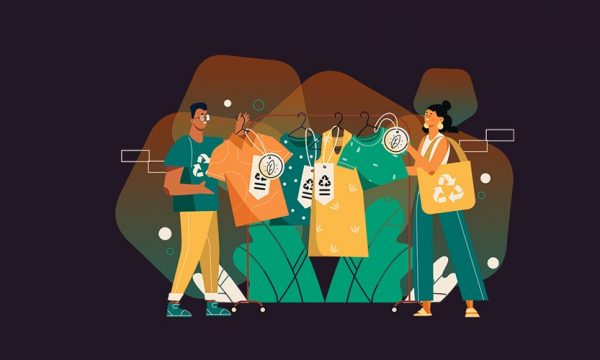Top B2B eCommerce Trends for 2025 + Essential Features
B2B is no longer business as usual. The playing field has altered, with digital transformation at its core. Businesses are demanding more from their B2B partners, mirroring the expectations forged in the B2C world. With staggering B2B eCommerce stats like $20.9 trillion projected global B2B eCommerce market sales by 2027 and 83% of B2B buyers seeking seamless online experiences, it’s clear that the future of business-to-business interactions is digital-first.
To thrive in this new era, companies must adapt and innovate. Let’s zoom into the key trends shaping B2B eCommerce and explore how you can capitalize on these opportunities.
Top B2B eCommerce Trends for 2025
The world of B2B is changing fast. To stay ahead, you need to adapt to new trends and customer expectations. Let’s dive into the top B2B trends in 2024 shaping the industry.

-
Personalization and Customization
Forget one-size-fits-all. Today’s B2B buyers expect a tailored experience. Can you imagine knowing exactly what your customers need before they even ask? That’s the power of personalization.
To deliver exceptional B2B customer experience trends, use customer data to craft product recommendations, pricing, and marketing messages that hit the bullseye. Think about giving different teams or departments within a company unique logins with tailored product catalogs and pricing. This strategic approach aligns with overall B2B eCommerce strategies focused on customer centricity.
A recent report from Forrester found that millennials and Gen Z make up a whopping 71% of business buyers. These younger generations have high expectations for personalized experiences.
-
Enhanced Mobile Experience
Your customers are on the go. And guess what? So is their work. Make sure your B2B store looks sharp and works smoothly on smartphones and tablets. From easy navigation to speedy checkout, a mobile-friendly site is a must-have.
Make sure you don’t overlook the tiny details, they can have a huge impact. Features like one-click reordering and saved shopping carts can turn casual browsers into loyal customers.
The demand for mobile applications in the B2B sector is exploding, projected to reach a staggering $8.7 trillion by 2026. This surge highlights the critical role mobile play in modern business. By making mobile optimization a priority, you’re not just keeping up—you’re getting ahead.
-
Integration of Advanced Analytics
Data is your secret weapon. Use it to understand your customers, optimize your product offerings, and improve your overall performance. Tools like analytics show you what’s working and what’s not, so you can make smart changes.
Keep an eye on trends, customer behavior, and sales data to get all the benefits of B2B eCommerce. This information can help you spot opportunities, cut costs, and boost profits. Investing in WooCommerce development services can further customize your platform to meet your specific B2B needs and maximize these advantages.
-
Automation and AI
Who likes paperwork? Nobody. Automation can handle the boring stuff, like order processing, inventory management, and customer service tasks. This allows your team to direct their attention towards what truly counts: fostering relationships and expanding your business.
From chatbots to automated email reminders, there are plenty of tools out there to help you streamline your operations.
-
Sustainable Practices
Customers care about the environment, and so should you. Sustainable practices can help you attract eco-conscious buyers and build a positive brand image.
Think about using recycled packaging, offering eco-friendly product options, and reducing your carbon footprint. It’s not just the right thing to do; it’s smart business.
-
Omnichannel Strategies
To cater to diverse customer needs and expand your market reach, consider adopting a multi-store eCommerce platform. This enables you to offer a seamless shopping experience across different channels, whether it’s online, in-store, or on their phone.
Offer consistent product information, pricing, and inventory across all channels. And make sure your customer service team can handle inquiries no matter where the customer is.
B2B buyers are increasingly navigating a complex, multi-channel purchasing journey. According to recent research, they’re using up to 10 channels to make purchases. To achieve success, it is important to meet them at that point and ensure a seamless experience across all interactions.
The rise of remote interactions during the pandemic accelerated the shift towards digital channels. With 35% of B2B buyers now rating eCommerce as the most effective sales channel, it’s clear that digital tools are essential.
Essential Features to Optimize Your Online Store
A successful online retailer isn’t only about looking good. It’s about functionality, ease of use, and a seamless customer experience. Let’s dig into the must-have components that will make your business a winner for your bright future of B2B eCommerce.
#1. User and Roles Management
Different people, different needs. Give each employee the right tools to do their job. Set permissions for viewing, editing, and approving orders, products, and customer information.
#2. Product Catalog
Your products deserve the spotlight, so give them a platform to shine. B2B eCommerce content optimization involves creating compelling content that aligns with your target audience and will convince them to make a purchase.
Tools like product information management (PIM) systems can help you manage and optimize your product content efficiently.
#3. Integration with content providers
Sometimes, you require expert help. Partner with content providers to get top-notch product information. Investing in product content management software (PCMS) can streamline your product information management process.
#4. Pricing optimization
Prices can make or break a sale. Offer flexible pricing options, like discounts for bulk orders or loyal customers. And don’t forget about bundle deals to boost sales.
#5. Easy check-out process
A long checkout process is a dealbreaker. Keep it simple and fast. Let customers save shipping addresses, payment information, and order history.
#6. Integration with product management systems
To streamline your operations and ensure data accuracy, seamless integration between your online store and product management systems is crucial. This integration is fundamental for efficient B2B eCommerce development and overall business growth.
#7. Payment systems integration
Give your customers plenty of ways to pay: credit cards, digital wallets—the more options, the better.
#8. Orders and Quotations
Keep track of orders from start to finish. Let customers check order status, reorder items, and manage returns with ease.
#9. Mobile Experience
Your store needs to look great on any screen. Optimize for mobile devices so customers can shop on the go.
#10. Intuitive easy Search
Provide your customers with a quick and easy smart search function.
#11. 24/7 Support
Great customer service is essential. Offer support around the clock, whether it’s through live chat, email, or phone.
Future of B2B Sales and Digital Commerce
Cross-border B2B eCommerce is emerging as a significant growth opportunity. As global markets become increasingly interconnected, businesses can expand their reach and tap into new customer segments. However, navigating different regulations, currencies, and logistics can be complex. By investing in technology and partnerships, companies can overcome these challenges and unlock the potential of international markets.
-
AI and Automation
Artificial intelligence (AI) isn’t just a hot topic. It’s a game-changer. Expect AI to handle more tasks, from customer service to inventory management. This means you can focus on bigger-picture stuff.
Imagine AI predicting customer needs, suggesting products, and even negotiating deals. It’s closer than you think.
-
VR and AR
Virtual and augmented reality (VR and AR) are stepping out of the gaming world and into business. Use these technologies to give customers interactive product demos or virtual site visits. This creates memorable experiences that set you apart. Virtual stores can significantly improve customer engagement, enable hyper-personalization, and allow for advanced marketing activities
-
Sustainability
Customers care about the planet. They want to work with businesses that share their values. Highlight your eco-friendly practices and offer sustainable products. This is not just good for the environment; it’s good for business too.
-
Blockchain: Trust and Transparency
Blockchain technology is bringing trust and transparency to supply chains. This means customers can track products from start to finish, knowing exactly where they came from. It’s a game-changer for industries like food and pharmaceuticals.
-
Voice Commerce: Talk to Buy
Voice assistants like Siri and Alexa are becoming part of our daily lives. Soon, customers will be ordering products with just their voices. Get ready to optimize your product information for voice search.
This is just the tip of the iceberg. The future of B2B eCommerce is exciting and full of possibilities. Stay curious, keep learning, and embrace the changes.
Conclusion
B2B eCommerce is changing fast. By focusing on personalization, mobile experiences, data, automation, sustainability, and omnichannel strategies, you can stay ahead of the curve.
Your online store is more than just a place to sell products. It’s a platform for building strong relationships with your customers. By offering a fantastic shopping experience and embracing the latest trends, you’ll not only survive but thrive in the future of digital commerce.
Want to stay ahead of the curve? Let’s talk about how you can prepare your business for what’s next.
Contact us to learn more.







